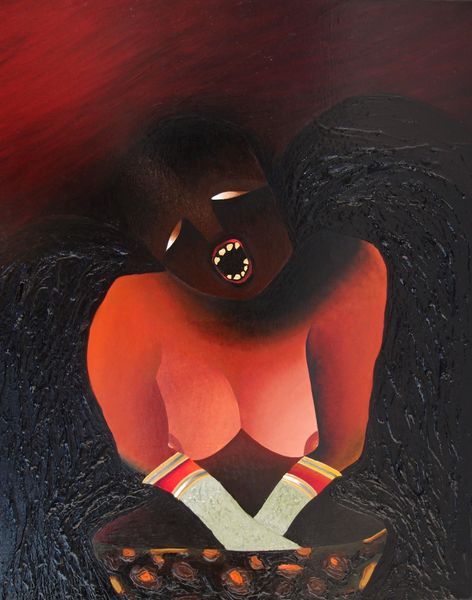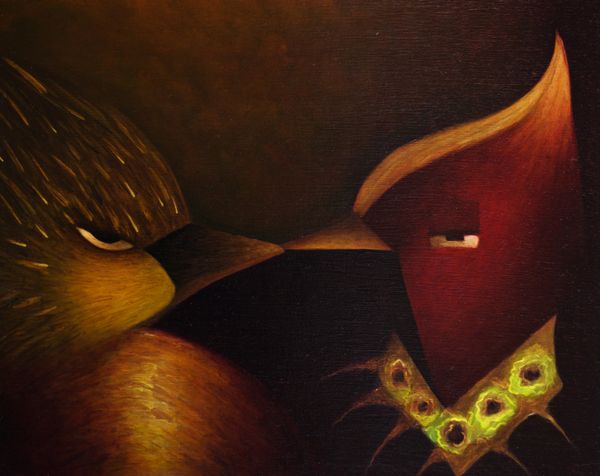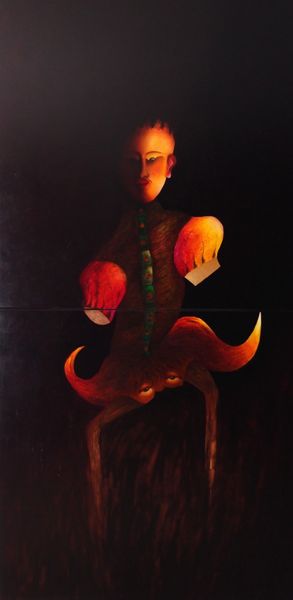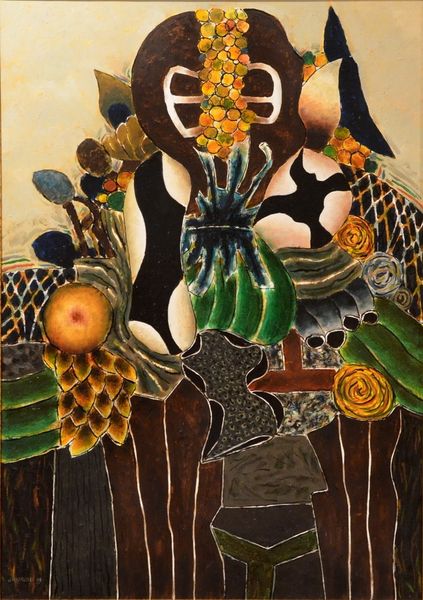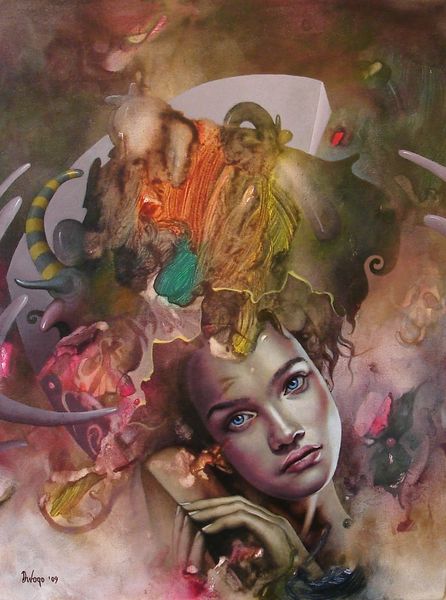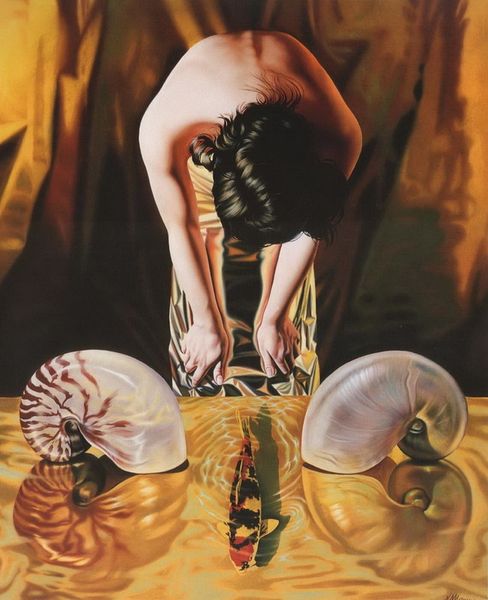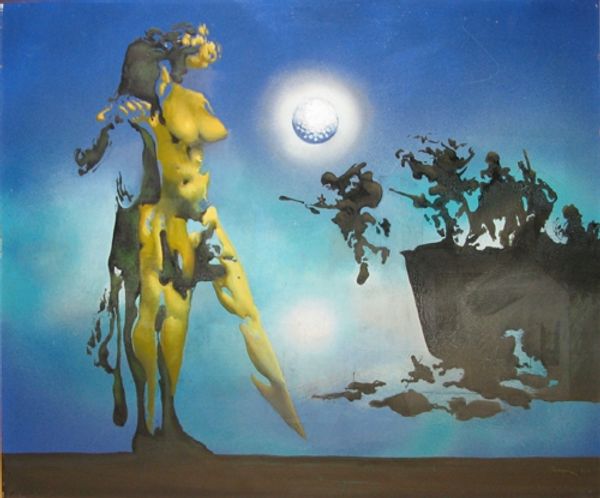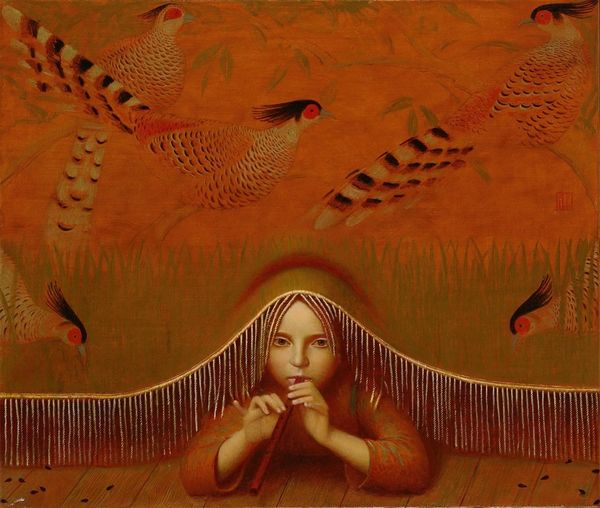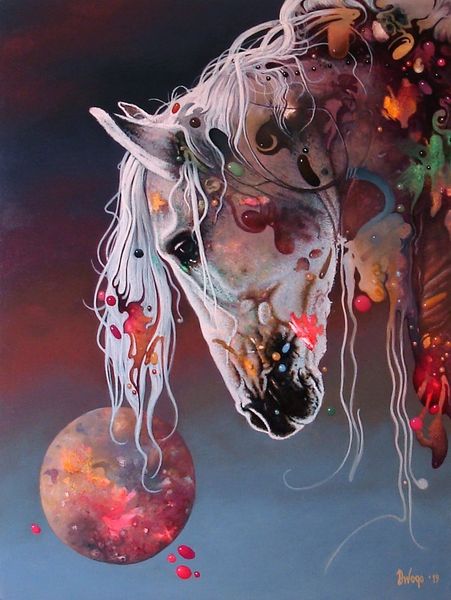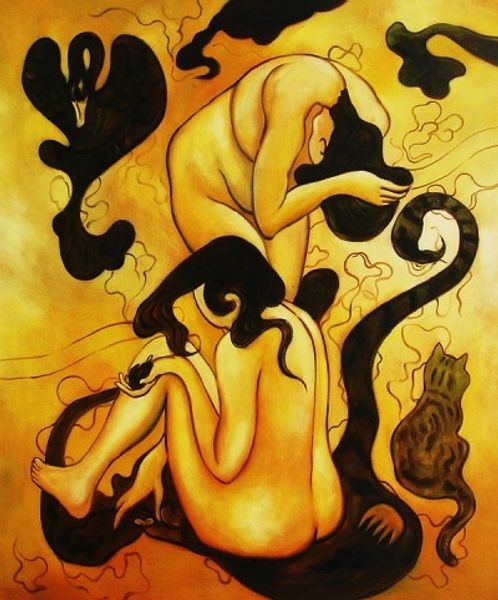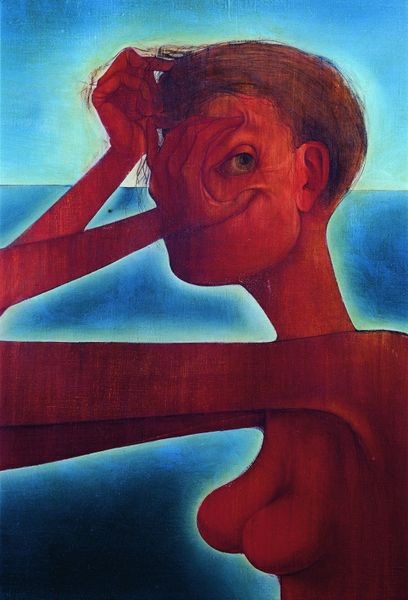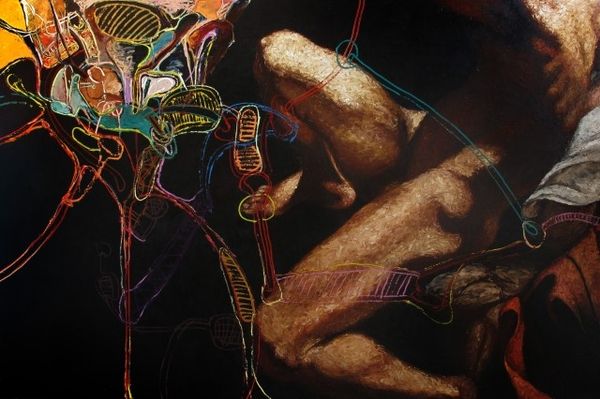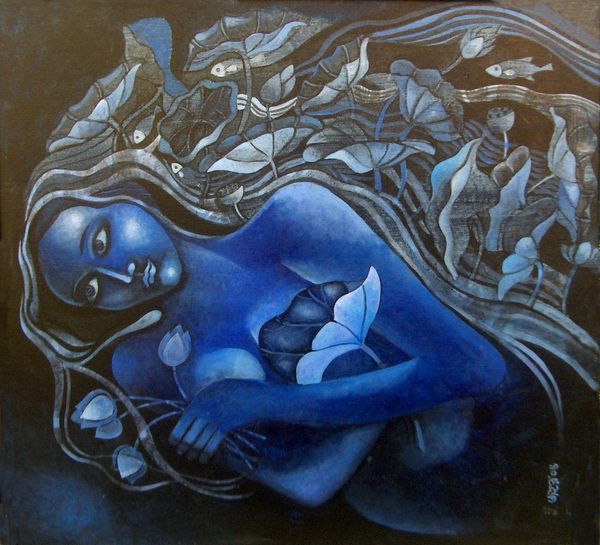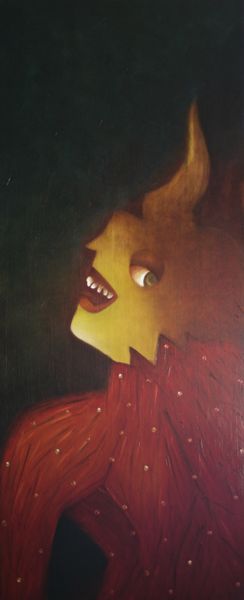
Dimensions: 100 x 100 cm
Copyright: Paulo Tercio,Fair Use
Curator: This painting, “Nothing Is What It Seems IV,” created in 2014 by Paulo Tercio, immediately strikes me with its air of veiled mystery. What’s your initial reaction? Editor: I’m captivated by the texture. The dark background seems almost alive, like hair undulating in a silent breeze. It feels both unsettling and alluring. Curator: The portrait certainly engages with themes of observation and concealed identity, particularly relevant in our contemporary, hyper-visible society. The repeating eye motif, scattered throughout the background, feels like a commentary on constant surveillance. Editor: Yes, that motif! Formally, the placement of those eyes draws the viewer’s own gaze across the canvas. The limited palette – primarily darks contrasted with the vibrant red lip and highlights on the face – really concentrates the focus. It's masterful in its restraint. Curator: Tercio’s style bridges Expressionism and Modernism, a fusion we can see manifested through his emotive subjects and distorted, bold forms. Do you sense the legacy of, say, a Modigliani, within the planes of her face? Editor: Absolutely. There’s a conscious distortion there, pushing it beyond a simple representational image. I'm particularly struck by the luminosity the artist manages to achieve, given the predominantly dark tones. It’s almost like the subject is illuminated from within. Curator: That glow might be a commentary on the visibility versus the invisibility of individuals based on race, status, and gender—an invitation to consider who is seen, and who remains hidden. Tercio challenges the conventional understanding of portraiture by injecting symbolism with such direct engagement, in turn forcing viewers to reckon with this reality. Editor: Well said. Thinking about it formally, the geometric lines dividing the face contrast quite remarkably with the organic flow of the "hair," adding another layer of visual tension. It is simple and yet complex, raw with detail, bold with contrast. Curator: It encapsulates how art can both mirror and distort, prompting dialogues that exceed merely its visual form. I would have never considered it in those words. Editor: Indeed. This encounter encourages us to question not just what we see, but how we perceive it.
Comments
No comments
Be the first to comment and join the conversation on the ultimate creative platform.
